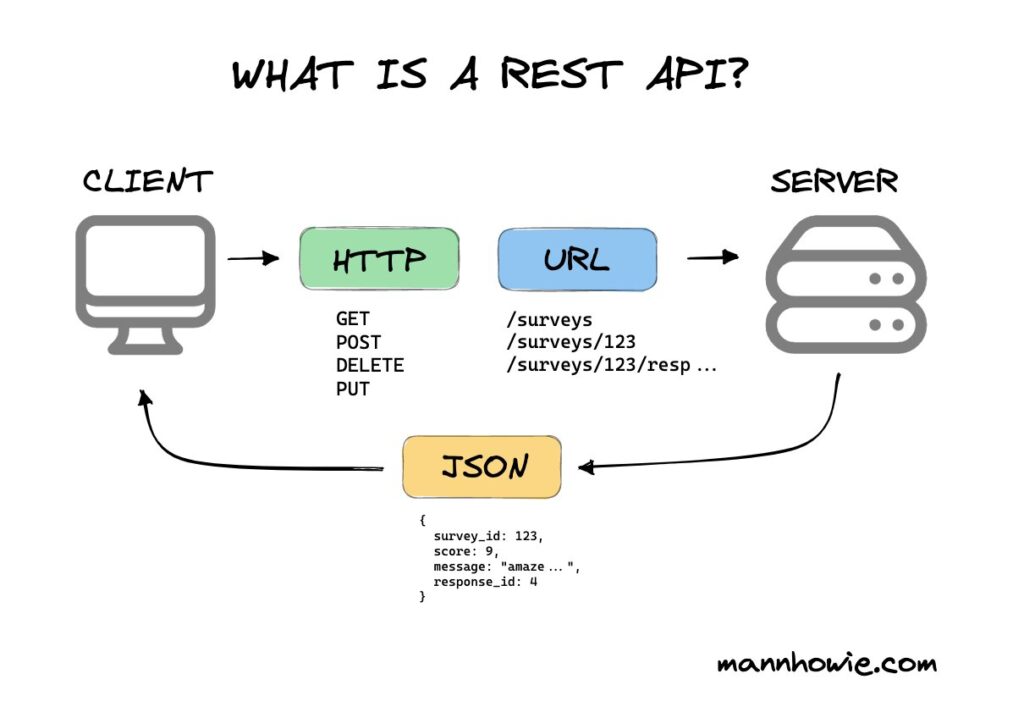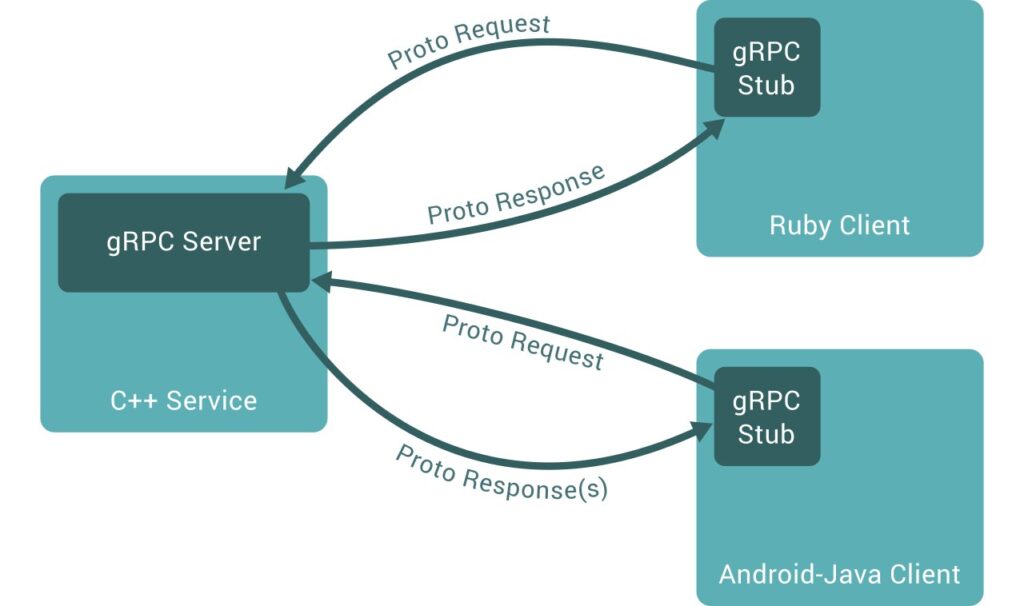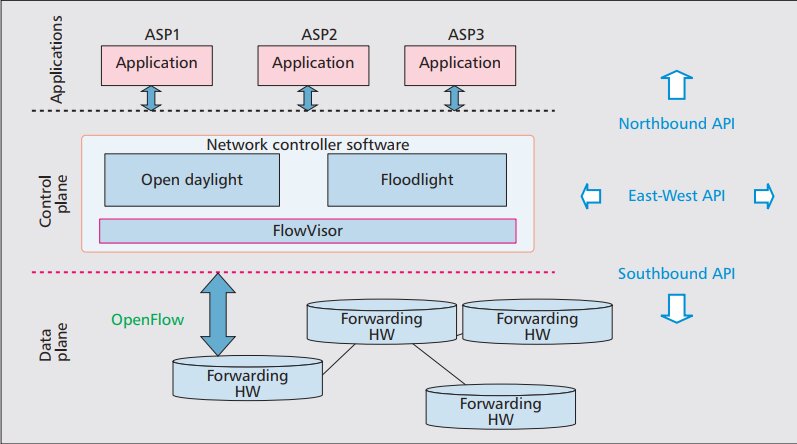In today’s fast-changing tech world, Software-Defined Networking (SDN) has become a major breakthrough, helping network managers run networks more efficiently using software instead of traditional hardware. A key part of SDN is its use of APIs (Application Programming Interfaces), with northbound and southbound APIs playing crucial roles.
The two common northbound APIs in a Software-Defined Network (SDN) are REST APIs and OpenFlow. These APIs allow communication between the SDN controller and applications, helping manage network resources and improve flexibility and control.
This article focuses on northbound APIs, especially the two most commonly used ones, and explains their importance in SDN. Aimed at readers in the USA, it offers clear insights into how these APIs work, their real-world impact, and how they boost network flexibility, scalability, and programmability.
Understanding the SDN Architecture:
Before diving into the two northbound APIs, it is essential to understand how SDN operates. Traditional networking involves routers and switches that make decisions independently. SDN separates the control plane (responsible for routing and decision-making) from the data plane (which forwards data). This separation allows for more centralized and programmable management of the network through a controller.
1. SDN uses a layered architecture with two primary sets of APIs:
- Northbound APIs: These enable communication between the SDN controller and applications, allowing administrators to control and monitor the network.
- Southbound APIs: These facilitate communication between the SDN controller and the underlying network devices like routers and switches.
What Are Northbound APIs in SDN?

Northbound APIs in SDN allow external applications to communicate with the SDN controller. These APIs enable applications to query the state of the network, provide instructions to the controller, and configure networking policies. Northbound APIs are essential for network management, automation, and orchestration, allowing the SDN controller to respond dynamically to application demands.
The Role of Northbound APIs
- Network Automation: They simplify the automation of network tasks, such as traffic engineering, security policy enforcement, and load balancing.
- Centralized Management: Administrators can configure, manage, and monitor network resources from a centralized controller using northbound APIs.
- Enhanced Visibility: Northbound APIs provide applications with a detailed view of the entire network, enabling better decision-making.
- Scalability: These APIs allow networks to scale more easily by automating processes and adjusting to changing demands.
The Two Key Northbound APIs in SDN:
1. RESTful APIs
RESTful APIs are perhaps the most commonly used northbound APIs in SDN environments. REST (Representational State Transfer) is an architectural style that uses HTTP to make calls between systems. RESTful APIs enable applications to interact with the SDN controller over standard web protocols, making integration easier and more flexible.
Features of RESTful APIs

- Stateless: Each API call contains all the information needed to complete the request, meaning no client context is stored on the server between requests.
- Scalability: RESTful APIs are lightweight and scalable, making them ideal for large networks.
- Widely Used: Since they use standard HTTP methods (GET, POST, PUT, DELETE), RESTful APIs are easy to understand and widely adopted in the networking world.
- Flexible Integration: They allow seamless integration with a wide range of applications, including those outside the traditional networking space.
How RESTful APIs Work in SDN
In the context of SDN, RESTful APIs allow external applications to send requests to the SDN controller. These requests could include commands to retrieve network status, configure network paths, or optimize traffic flows. For instance, a network monitoring application could use RESTful APIs to pull real-time traffic data from the SDN controller, enabling administrators to identify bottlenecks or security threats.
2. gRPC (Google Remote Procedure Call)
gRPC is another widely used northbound API in SDN architectures. It was developed by Google and is known for its high performance, efficiency, and ability to operate across multiple programming languages. Unlike RESTful APIs, which use HTTP, gRPC is based on HTTP/2 and supports bi-directional streaming, making it more suitable for real-time applications that require continuous communication between the controller and applications.
Features of gRPC

- High Performance: gRPC uses HTTP/2, which is faster and more efficient than traditional HTTP, especially for large-scale applications.
- Streaming: Supports bidirectional streaming, allowing continuous communication between the SDN controller and the applications.
- Language Agnostic: gRPC allows different systems to communicate, even if they are written in different programming languages.
- Efficient Data Serialization: gRPC uses protocol buffers (Protobuf) for data serialization, making it more efficient than JSON, which is commonly used in RESTful APIs.
How does gRPC Works in SDN?
gRPC is ideal for scenarios where real-time communication and performance are crucial. For example, in an SDN environment handling real-time video streaming or IoT applications, gRPC allows the SDN controller and applications to exchange data continuously and without delays. This makes gRPC a popular choice for time-sensitive networking tasks, such as load balancing and QoS (Quality of Service) management.
RESTful APIs vs. gRPC: A Comparison
| Feature | RESTful APIs | gRPC |
| Protocol | HTTP | HTTP/2 |
| Data Format | JSON (text-based) | Protocol Buffers (binary) |
| Performance | Slower, less efficient for large datasets | High performance, efficient for large datasets |
| Streaming | No streaming, request-response model | Bi-directional streaming supported |
| Language Support | Broadly supported across many languages | Language agnostic, with better performance |
| Use Case | Suitable for general-purpose applications | Ideal for real-time, performance-sensitive applications |
Benefits of Using Northbound APIs in SDN:
Northbound APIs in SDN offer a range of benefits, particularly in terms of flexibility, automation, and scalability. Below are some key advantages:

1. Programmability
Northbound APIs enable a high level of programmability, allowing developers to write applications that directly control and configure network behavior. This is particularly useful in data centers and cloud environments, where networks must adapt quickly to changing workloads.
2. Automation
With northbound APIs, many networking tasks, such as traffic routing, bandwidth allocation, and load balancing, can be automated, reducing the need for manual intervention. This leads to more efficient network management and faster response times.
3. Custom Applications
By leveraging northbound APIs, organizations can create custom applications that meet specific networking needs. For example, a company might develop an application that optimizes network performance based on real-time data from the SDN controller.
4. Improved Network Monitoring
Northbound APIs give applications access to detailed information about the network, such as traffic patterns, device status, and security events. This enables better monitoring and more proactive management of the network.
Challenges of Northbound APIs in SDN:
Despite the many benefits, there are also challenges associated with using northbound APIs in SDN:

1. Complexity
Implementing and managing northbound APIs, especially in large-scale networks, can be complex. Developers need to be familiar with the underlying network architecture and the specifics of API integration.
2. Security Concerns
Northbound APIs expose the SDN controller to external applications, which could create potential security vulnerabilities. It’s essential to implement robust authentication and authorization mechanisms to prevent unauthorized access.
3. Performance Overheads

While APIs like gRPC offer high performance, they still introduce some overhead compared to traditional networking approaches. Ensuring that the network can handle the additional load imposed by API traffic is critical.
FAQ’s
1. What is the role of northbound APIs in SDN?
Northbound APIs allow external applications to interact with the SDN controller, enabling network management, automation, and monitoring.
2. What are the two main northbound APIs used in SDN?
The two primary northbound APIs used in SDN are RESTful APIs and gRPC.
3. How do RESTful APIs work in SDN?
RESTful APIs use HTTP to allow applications to send requests to the SDN controller, which then configures or monitors the network based on these requests.
4. What are the benefits of using gRPC in SDN?
gRPC offers high performance, bidirectional streaming, and efficient data serialization, making it ideal for real-time applications in SDN.
5. Why is RESTful API popular in SDN?
RESTful APIs are popular because they are easy to implement, widely supported, and use familiar web protocols (HTTP).
6. What are the challenges of using northbound APIs in SDN?
Some challenges include complexity, potential security vulnerabilities, and performance overheads due to the increased traffic from API interactions.
Conclusion:
Northbound APIs are a fundamental part of the SDN ecosystem, enabling external applications to interact with the SDN controller and manage network resources. RESTful APIs and gRPC are two widely used northbound APIs that offer distinct advantages depending on the use case.
RESTful APIs are easy to implement and integrate with a wide range of applications, while gRPC excels in performance and real-time communication.

